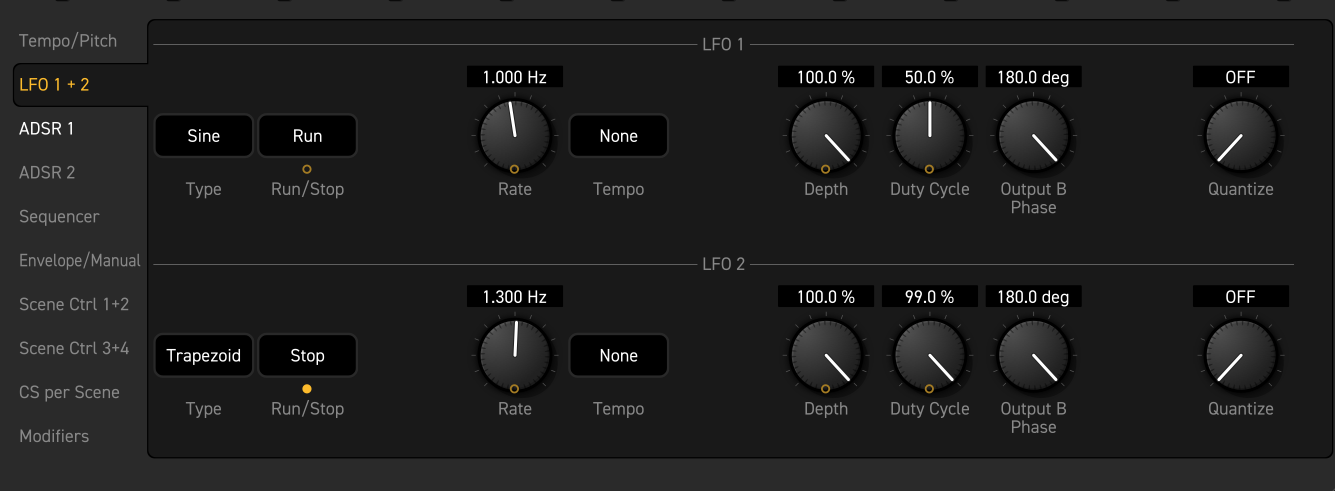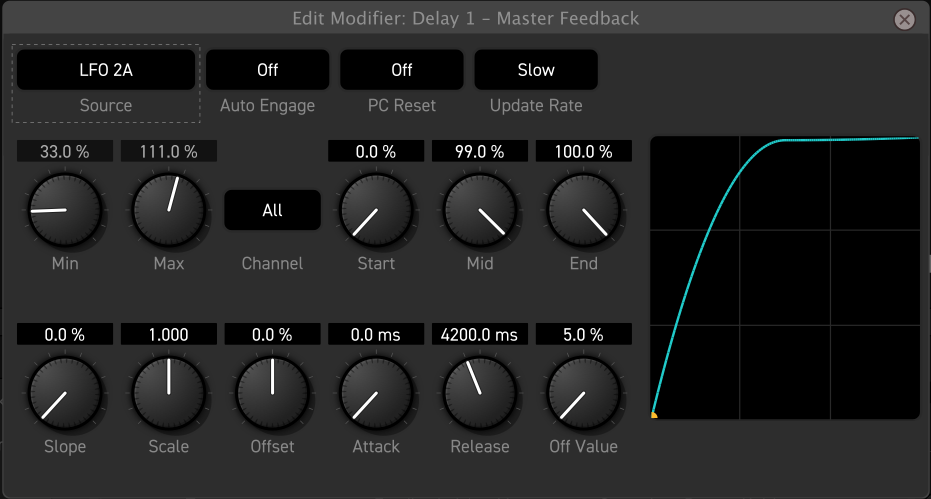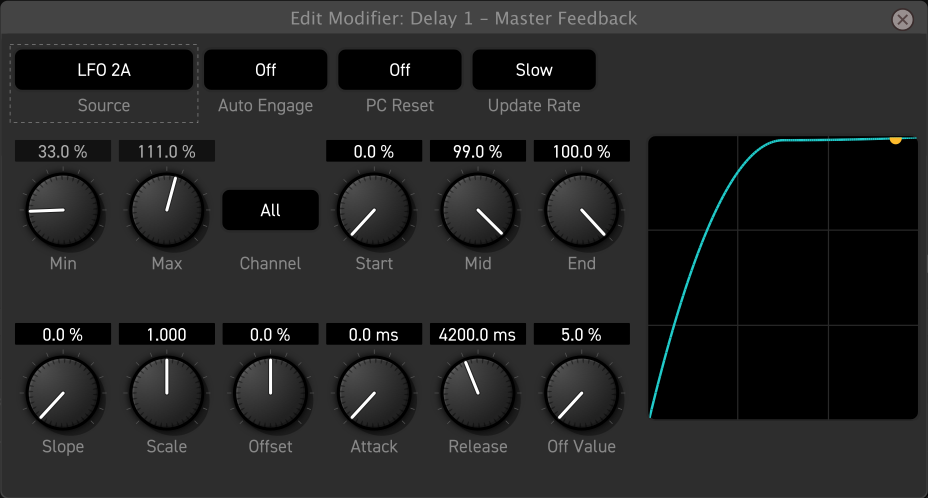Joe Bfstplk
Legend!
Is triggered single-shot LFO controller action possible?
Looking to control delay feedback, with a momentary switch somehow, so that it increases for a few seconds, then reverts to its previous setting afterwards automatically, without having to hold the switch on, as if the control switch triggered one cycle of an LFO tied to the feedback knob.
I tried using the sequencer, but I guess I don't get how it operates.
Looking to control delay feedback, with a momentary switch somehow, so that it increases for a few seconds, then reverts to its previous setting afterwards automatically, without having to hold the switch on, as if the control switch triggered one cycle of an LFO tied to the feedback knob.
I tried using the sequencer, but I guess I don't get how it operates.



